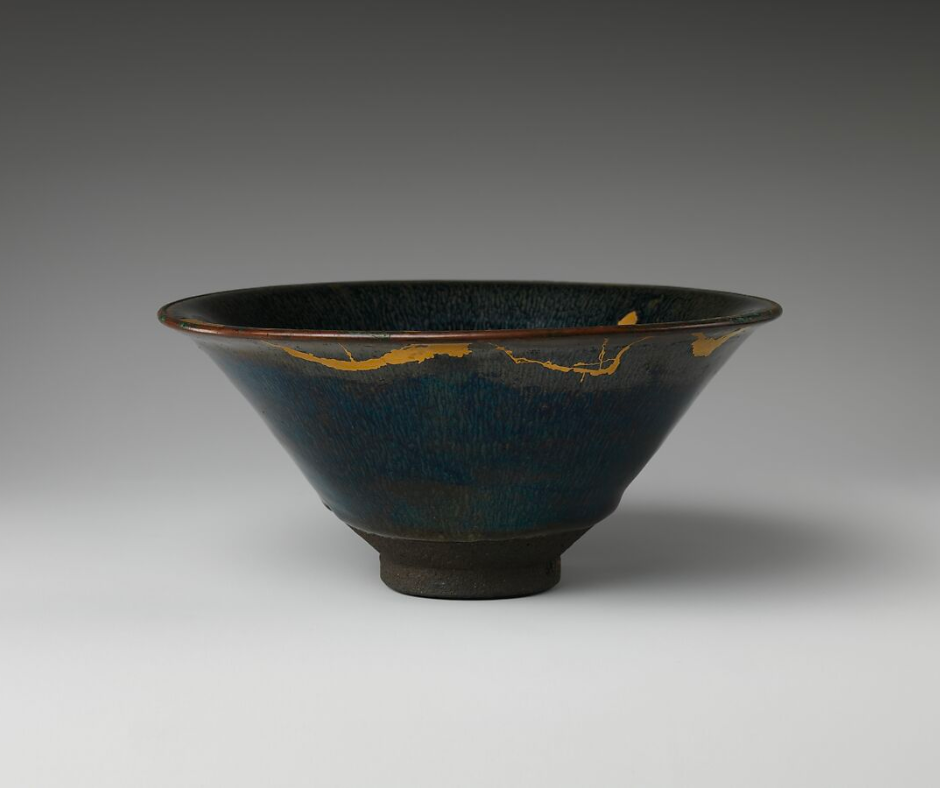

From Barro Negro to Bucchero: Black Pottery Around the World
Summary
This article explores the diverse world of black pottery, from Greek Black-Figure Pottery to Mexican Barro Negro. It highlights various global traditions, techniques, and the cultural significance of black pottery, emphasizing its beauty and utility in different civilizations across time.
Reflection Questions
- How do the varying techniques and cultural contexts influence the aesthetic and functional qualities of black pottery in different regions?
- What role does the color black play in the symbolism and usage of pottery across different cultures?
- Considering the intricate techniques involved in creating black pottery, what can these methods tell us about the technological advancements and artistic priorities of ancient cultures?
Journal Prompt
Think about an object in your home that connects you to a cultural or historical tradition, similar to how black pottery connects various cultures to their heritage. Reflect on the story behind this object, how it came into your possession, and what it symbolizes about your personal or cultural identity.
From the detailed silhouettes of Greek Black-Figure Pottery to the glossy elegance of Mexican Barro Negro, black-finish pottery across the globe represents a unique blend of artistry, tradition, and scientific technique. In this article, we will explore several different types of black-finish pottery from around the world—highlighting the techniques, historical contexts, and cultural meanings that have made these ceramics so cherished. Through examining pieces like the intricate Greek amphorae, the floral Turkish Çanakkale, and pottery from the San Ildefonso and Santa Clara Pueblos, we uncover the universal yet distinct ways in which different cultures have harnessed the power of fire and earth to create objects of both beauty and utility. Read on to learn all about Bucherro, Barro Negro, and more!
Past and Present: Black-Finish Pottery from Around the World
Greek Black-Figure Pottery
Greek Black-Figure Pottery, developed in ancient Greece around the 7th century BCE, is renowned for its distinctive technique of depicting silhouetted figures in black slip on a red clay background. The pottery was then fired in a three-stage process that turned the figures black while leaving the background red.
This style flourished during the Archaic and early Classical periods, reaching its zenith between the 6th and 5th centuries BCE. Key creators of this type of pottery include the Exekias and the Andokides Painter, who were masters of the black-figure technique. Prominent pieces include the amphorae and kylixes, which often depicted scenes from mythology, athletics, and daily life, providing valuable insights into ancient Greek culture and society.
Chinese Jian Ware (Song Dynasty)


Chinese Jian Ware, produced during the Song Dynasty (960-1279 CE) in the Fujian province, is famed for its thick, dark, lustrous glazes, often with distinctive hare’s fur or oil spot patterns. The pottery is characterized by its robust, utilitarian forms, primarily used for tea bowls highly prized in the traditional tea culture of the time. The unique glaze effects were achieved through high-temperature reduction firing, which interacted with the iron-rich clay to create the black or dark brown finishes.
Notable examples of Jian ware include the “Hare’s Fur” and “Oil Spot” tea bowls, which were particularly valued by Chinese tea connoisseurs and later influenced Japanese tea ceremony aesthetics. These pieces are celebrated for their subtle beauty and the complex, random patterns of their glazes, representing the pinnacle of Chinese ceramic art in the Song Dynasty.
Puebloan Blackware (Southwest USA)


Blackware pottery from the Southwest USA, particularly associated with the Puebloan peoples like the San Ildefonso and Santa Clara Pueblos, is beloved for its glossy black finish achieved through a combination of burnishing and reduction firing techniques. Dating back centuries, this pottery gained significant prominence in the early 20th century with the work of renowned potters like Maria Martinez and her husband Julian, who perfected the technique of black-on-black pottery, creating striking matte designs against a polished black background.
The creation process involves meticulously polishing the surface before firing in a kiln with minimal oxygen, which blackens the clay. These elegant, functional, and ceremonial pieces reflect the rich cultural heritage and artistic innovation of the Puebloan peoples, making them highly valued both historically and in contemporary art circles.
Fuel your creative fire & be a part of a supportive community that values how you love to live.
subscribe to our newsletter
*please check your Spam folder for the latest DesignDash Magazine issue immediately after subscription


British Medieval Blackware
British Medieval and Post-Medieval Blackware, produced from the 12th to the 16th centuries, is a type of pottery characterized by its dark, almost black surface, achieved through a high-temperature firing process that utilized a reduced oxygen atmosphere. This pottery was common in Britain during the late medieval period and included everyday items like jugs, cooking pots, and storage vessels.
The dark coloration came from the iron-rich clay used and the firing technique, which involved enclosing the kiln to create the reducing atmosphere. Although specific individual creators are not well-documented, the widespread production of blackware pottery indicates a thriving craft practiced by numerous potters across medieval Britain. These utilitarian pieces are significant for their durability and practicality, reflecting the daily life and domestic practices of medieval British society.
Peruvian Chulucanas Pottery


Peruvian Chulucanas Pottery, originating from the Chulucanas region in northern Peru, traces its roots back to the pre-Columbian Vicús culture, flourishing from around 500 BCE to 500 CE. This distinctive pottery is renowned for its smooth black and white finish, achieved through burnishing and a smoke-firing technique that imparts a glossy, blackened surface.
Contemporary Chulucanas pottery often features geometric patterns, animal motifs, and traditional designs that echo its ancient heritage. Notable creators include craftsmen like Simeon Acuña and Ignacio Ramos, who have helped elevate Chulucanas pottery to international recognition. These pieces, ranging from decorative vases to functional bowls, are celebrated for their artistic beauty and cultural significance, representing a fusion of ancient techniques and modern artistic expression.
Turkish Çanakkale Pottery
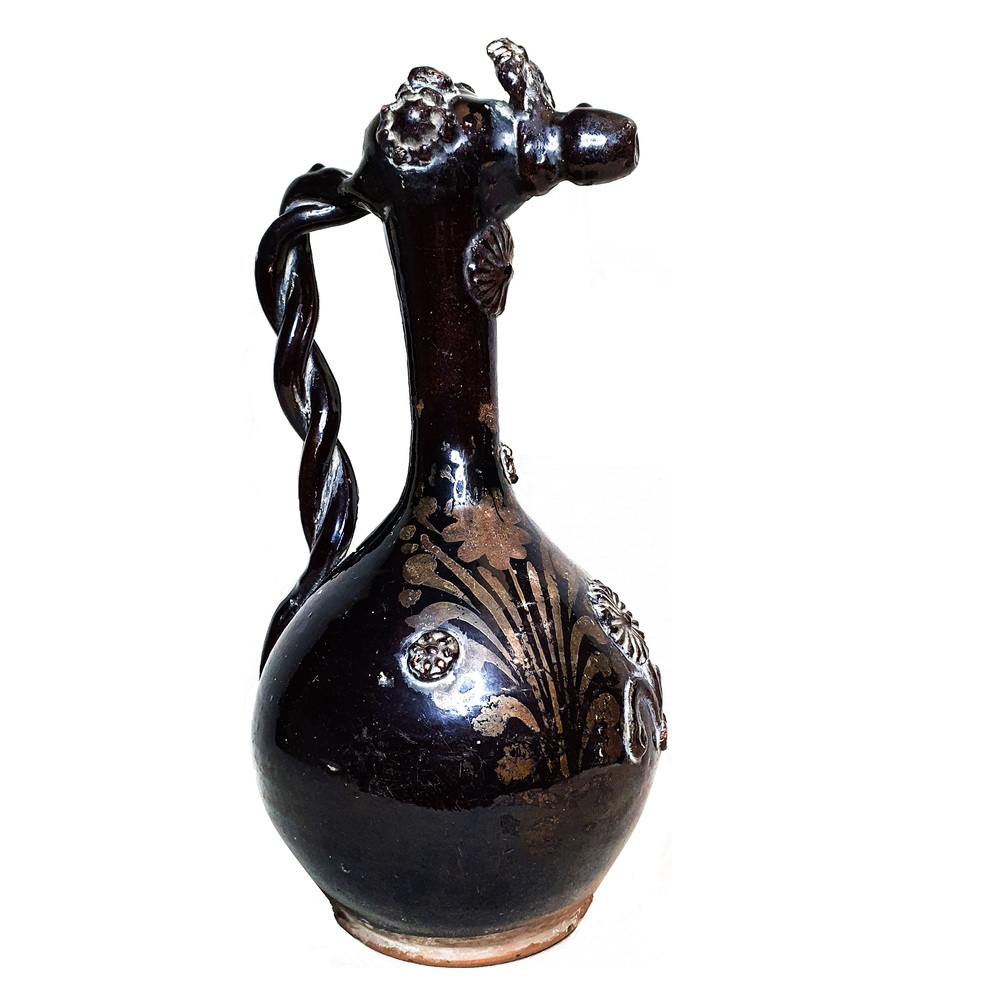

Turkish Çanakkale Pottery, originating from the town of Çanakkale in northwestern Turkey, flourished between the 17th and 19th centuries. This pottery is known for its distinctive black glaze and intricate decorative patterns, often featuring floral motifs, geometric designs, and sometimes human figures. The technique involves wheel-throwing, detailed hand-painting, and a high-temperature firing process that produces the characteristic glossy black-brown finish.
Çanakkale pottery includes a variety of forms like bowls, jugs, and vases. Elaborately decorated Çanakkale ewers and jars, which are highly valued by collectors and museums worldwide. This pottery reflects the rich artistic traditions of the Ottoman Empire and continues to be a symbol of Turkish cultural heritage.
Djenne, Zulu, and Other African Black Pottery
African black pottery, across its various forms and regions, plays a crucial role in the daily life and cultural practices of many communities. These pottery traditions are not only valued for their functionality but also for their artistic and symbolic meanings. The techniques used to create the black finishes, like burnishing and reduction firing, demonstrate the ingenuity and skill of African potters. Additionally, the decorative patterns and motifs found on these pots often carry cultural and historical significance, representing the identities and heritage of the communities.
Djenne Pottery (Mali)
Djenne pottery, originating from the ancient city of Djenne in Mali, dates back to around the 13th century and is part of the rich cultural heritage of the Mali Empire. This pottery is well-known for its hand-built construction and distinctive decorative styles, which often include intricate incised patterns and elaborate figurative motifs. The pottery is typically fired in open pits, where the lack of oxygen during firing results in a characteristic black or dark grey finish.
One of the most iconic types of Djenne pottery is the large, sculptural vessels used for storage and ceremonial purposes. While specific individual creators from historical periods are not documented, contemporary artisans continue to draw inspiration from traditional designs, ensuring the continuation of this craft. Djenne pottery is not only valued for its functional uses but also for its artistic and cultural significance, representing the ingenuity and artistic heritage of the Mali Empire.
Zulu Pottery (South Africa)
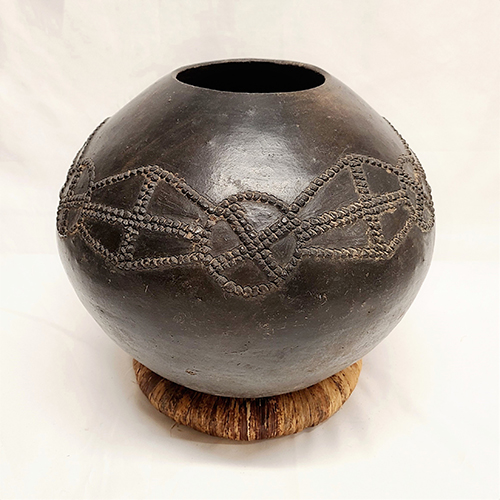

Zulu pottery, crafted by the Zulu people of South Africa, is a traditional form of pottery that has been passed down through generations. This pottery is notable for its glossy black finish, achieved through meticulous burnishing and firing techniques. The pottery is often fired in open pits with organic materials, which create a reducing atmosphere that blackens the clay.
Zulu pottery includes a variety of forms, like beer pots (ukhamba), which are used in social and ceremonial contexts. The pots are often decorated with geometric patterns and motifs that hold cultural significance. Notable modern potters include Nesta Nala, who has gained international recognition for her work that combines traditional Zulu techniques with contemporary artistry. Zulu pottery is an integral part of the Zulu cultural identity, reflecting both the community’s artistic traditions and their daily life practices.
Other African Black Pottery
In addition to Djenne and Zulu pottery, various other African cultures have developed unique black pottery traditions, each with distinct techniques and cultural significance. For example, the Yoruba people of Nigeria create blackened pottery using a similar pit-firing method, often resulting in beautifully burnished surfaces. These pots are used for cooking, storage, and ritual purposes, and are often adorned with intricate patterns that reflect Yoruba artistic sensibilities.
The Maasai people of Kenya and Tanzania also have their own black pottery style, which is typically burnished and fired in open pits. Maasai pottery is functional, used for storing milk and water, and reflects the pastoral lifestyle of the Maasai community.
Ethiopian black pottery, made by various ethnic groups, is another example. This pottery is typically coiled and then burnished to a smooth finish before being fired in reducing conditions to achieve a black finish. Black clay is not typically used in the manufacturing process. Ethiopian pots are often used for cooking and serving traditional dishes, as well as in religious and cultural ceremonies.
Japanese Raku and Tenmoku
Japanese Raku and Tenmoku pottery, prominent from the 16th century onward, are celebrated for their unique glazing techniques and deep cultural significance in Japanese tea ceremonies. Raku ware, traditionally used for tea bowls, is distinguished by its hand-shaped forms and low-temperature firing, resulting in a porous, often cracked surface with a rustic charm. It was popularized by the potter Chōjirō under the patronage of the tea master Sen no Rikyū.
Tenmoku, originating from Chinese Jian ware, features a high-fired stoneware with rich, dark glazes that often exhibit stunning oil-spot or hare’s fur patterns. These pieces were adapted by Japanese potters for the tea ceremony, valued for their elegant and serene aesthetic. Both Raku and Tenmoku exemplify the Wabi-Sabi philosophy, appreciating imperfection and natural beauty, and continue to influence contemporary ceramics.
Early Etruscan Bucchero Pottery
Early Etruscan Bucchero pottery, dating from the 7th to the 5th centuries BCE, is beloved for its smooth, black finish achieved through a reducing firing process that limits oxygen, transforming the iron in the clay into a glossy black surface. Bucchero wares were primarily produced in the Etruscan regions of central Italy and are notable for their fine, thin-walled construction and elegant forms, often resembling metalwork.
The term “bucchero” derives from the Italian word “bucchero,” which itself derives from the Spanish term “búcaro.” The Spanish word “búcaro” was used to describe a type of aromatic clay pottery from Central and South America, which was popular in Europe during the 16th and 17th centuries. This aromatic pottery was often used to make drinking vessels and small containers.
The term was later adopted by archaeologists and art historians to describe the distinctive black pottery produced by the Etruscans, due to similarities in the clay’s appearance and finish. Etruscan Bucchero pottery is known for its smooth, black surface, achieved through a specific firing process that involves reducing the amount of oxygen in the kiln, resulting in a shiny, metallic-looking finish. The Etruscans used this technique to produce various forms of pottery, including vases, cups, and other vessels, which were highly valued for both their aesthetic qualities and their functional uses.
Common pieces crafted through bucchero production include vases, cups, and plates, frequently adorned with incised or relief decoration. Prominent examples of Bucchero ware exhibit intricate motifs and elaborate shapes, reflecting the Etruscans’ sophisticated artistry and cultural influences from Greece and the Near East.
Notable centers of production included the cities of Cerveteri and Tarquinia, which were significant hubs of Etruscan culture and craftsmanship, though the names of Etruscan potters are not well known (especially the earliest examples). Bucchero pottery played a crucial role in Etruscan rituals and daily life, symbolizing both practical utility and social status.
Bucchero Sottile
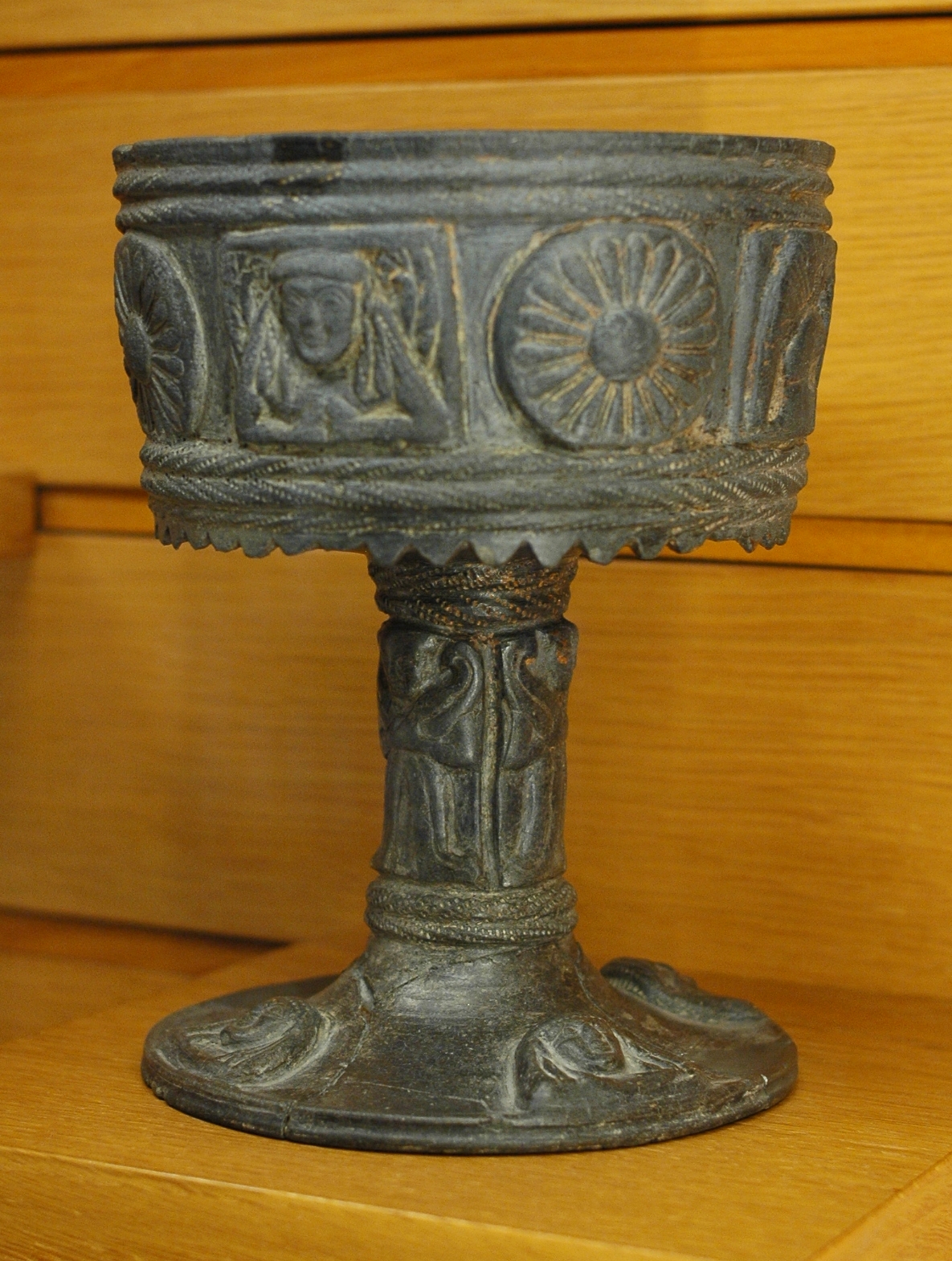

Bucchero Sottile, primarily produced from the 7th to the early 6th century BCE, is renowned for its thin walls, fine quality, and delicate construction. This type of Bucchero is characterized by its smooth, glossy black finish, achieved through a sophisticated reduction firing technique.
The pottery often includes elegant shapes like chalices, cups, and small vases. Decorations on Bucchero Sottile are usually incised or in relief, featuring motifs influenced by Greek and Near Eastern art. The exquisite craftsmanship and refined aesthetic of Bucchero Sottile made it highly prized in Etruscan society for both everyday use and ceremonial purposes.
Bucchero Pesante
Bucchero Pesante emerged from the mid-6th to the 5th century BCE, representing a shift towards heavier and thicker-walled pottery compared to the earlier Bucchero Sottile. While it still retains the characteristic black finish, this heavy bucchero is often less glossy and more robust. Bucchero Pesante includes larger vessels like urns and storage jars, which were both functional and ceremonial.
The decorations on Bucchero Pesante can be more elaborate, featuring molded or stamped designs, and sometimes include applied figures. This type of pottery reflects a period of innovation and adaptation in Etruscan ceramic art, responding to changing social and cultural needs.
Regional Variations
Different Etruscan regions produced Bucchero pottery with distinct local styles, reflecting the diversity within Etruscan society. For example, Cerveteri (Caere) was known for its high-quality Bucchero, distinguished by detailed relief work that showcased the skill of local artisans.
In Tarquinia, potters produced Bucchero with unique shapes and often more ornate decorations, adding to the region’s reputation for artistic excellence. Chiusi was famous for producing both fine and robust Bucchero, with some pieces featuring painted or incised decorations. These regional variations highlight the adaptability and creativity of Etruscan potters, who incorporated local traditions and external influences into their work.
Barro Negro Pottery (Mexico)
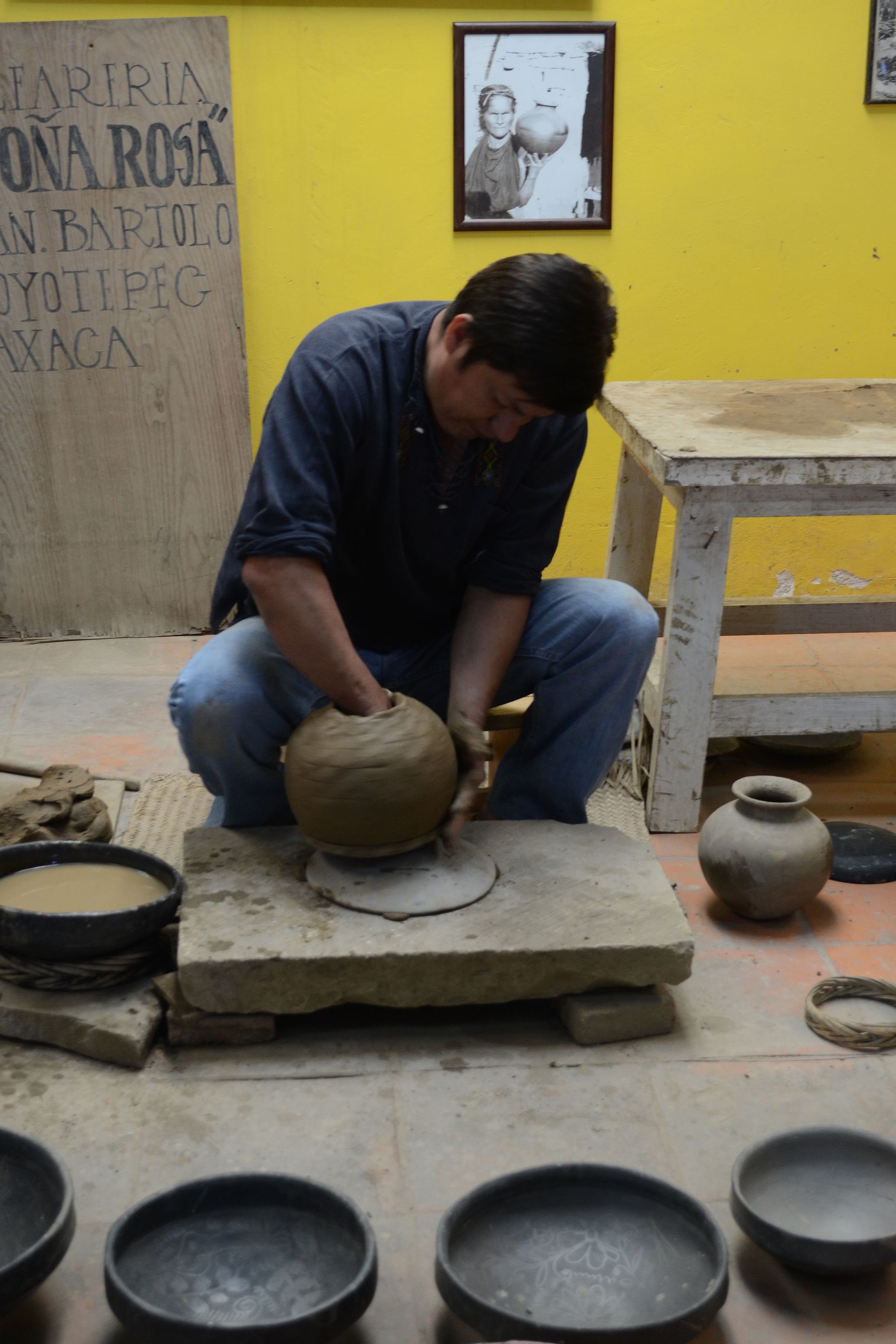

Barro Negro pottery, originating from Oaxaca, Mexico, dates back to pre-Columbian times but gained significant renown in the 20th century through the innovations of Doña Rosa Real, who was from San Bartolo Coyotepec. Known for its distinctive black sheen, Barro Negro is crafted from a unique local clay and polished with quartz stones before being fired in a reducing atmosphere, which gives it its characteristic black color.
This pottery includes a wide range of items like jars, vases, and figurines, often featuring intricate designs and incised patterns. The sleek, glossy finish of Barro Negro pottery, combined with its traditional and contemporary forms, has made it a staple of Oaxacan cultural identity and a popular choice for both functional and decorative uses. Doña Rosa’s techniques have been passed down through generations, ensuring the continuation of this iconic Mexican craft.
Final Thoughts on the Black Pottery of Civilizations All Around the Globe
The proliferation of black ceramics across the world demonstrates a universal fascination with transforming humble clay into objects of profound beauty and significance. Each piece, whether it is a finely crafted Jian tea bowl from China or a robust Bucchero vase from Southern Etruria, tells a story of innovation, cultural exchange, and artistic excellence. These ceramics are embodiments of the societies that created them, reflecting their values, rituals, and daily lives. As modern artisans continue to draw inspiration from these traditional techniques, black-finish pottery continues to bridge the past and present while celebrating the timeless human impulse to create.








